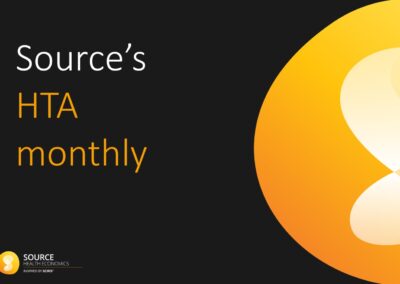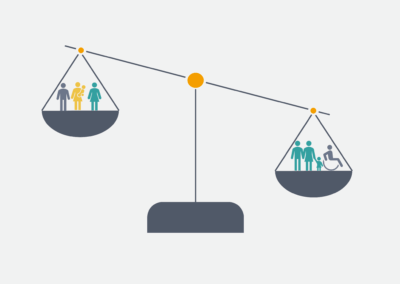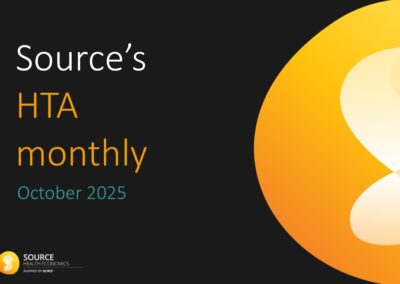Written by Kelly O’Toole and Ethan Maughan
Kelly O'Toole
Associate Medical Writer
Ethan Maughan
Associate Medical Writer
Medical writers working in health economics and outcome research (HEOR) play a crucial role in helping to communicate clinical and economic data in a clear and accurate way. At Source, medical writers have the opportunity to grow their expertise in this specialised field, gaining experience in a variety of different projects, and working across deliverables such as value communication materials, health technology assessment (HTA) dossiers, manuscripts, systematic literature reports (SLRs), plus many more. To gain insight into this journey, we asked two of our newest associate medical writers, who joined Source in March 2024, about their experiences and growth during their first year.
What were you doing before joining Source?
Kelly: Before joining Source Health Economics, I completed a PhD in neuroscience, during which I discovered a passion for communicating complex scientific concepts to diverse audiences. Now, as an associate medical writer at Source, I’m able to turn intricate clinical data and economic insights into clear, engaging narratives across a wide range of therapeutic areas.
Ethan: Before joining Source, I spent over a year at a large medical writing agency, where I focused on developing medical affairs materials, including creating congress posters and publications. I was drawn to Source not only by my curiosity to delve deeper into health economics and its practical applications, but also by the collaborative and dynamic environment of a smaller agency, where I could have a more direct impact on projects.
Have you gained any value communications experience?
Kelly: During my first year at Source, I have contributed to multiple value communication projects, which have focused on conveying the value of a new treatment to healthcare professionals (HCP) and payers. This includes larger documents such as global value dossiers (GVDs) as well as shorter visually appealing materials. These documents are used to succinctly communicate the clinical and economic value of a new intervention, combining technical information with a compelling narrative to highlight how it may address a currently unmet need.
Ethan: In my first year at Source, I have gained valuable experience in value communication, working directly with clients to develop key deliverables aimed at HCPs. Collaborating closely with designers, I wrote an HCP implementation guide and an HCP leave piece. Both pieces were crafted to convey the value of a medicine for a rare genetic disorder, which also provided clear guidance on National Institute for Health and Care Excellence (NICE) processes and combined creative design with impactful messaging to support HCPs in implementing this treatment.
How have you contributed to the development of HTAs?
Kelly: I have primarily worked on HTAs for a variety of anti-cancer interventions submitted for evaluation through Ireland’s National Centre for Pharmacoeconomics (NCPE). I’ve been involved in populating the clinical evidence sections of the HTA dossier and reviewing economic model analyses. As a medical writer, my role has been to ensure that the submission documents I support effectively communicate the value of new therapies to specific patients, completing all sections of the template with information on the new therapy to help inform decisions on their reimbursement. I find it incredibly rewarding to contribute to these HTAs that help shape decisions, impacting patient care and their outcomes.
Ethan: I have developed strong expertise in HTAs, primarily in oncology, with some work in haematology as well. I’ve contributed to submissions for evaluation by UK bodies such as NICE and the Scottish Medicines Consortium (SMC). I’ve been fortunate to engage in a range of submissions, including new areas for Source, which has provided interesting challenges and learnings for the team.
What about publications?
Kelly: I’ve been able to leverage my academic background to contribute to publications on the economic models developed by our health economists. These manuscripts aim to make our complex economic analyses accessible to a wider audience, including policymakers, healthcare providers, and academics, helping to ensure that our insights into cost-effectiveness and healthcare value are visible and impactful.
Ethan: My experience in publications has been more limited, although I did work on reformatting a manuscript for a new journal after it was initially declined. This adaptability is all part of Med Comms, where each project brings unique challenges and learning opportunities.
Lastly, how do you collaborate with other teams at Source?
Kelly: As a medical writer at an HEOR consultancy, our job also involves editing and quality checking documents generated by other teams, such as from the health economics and SLR teams. We translate their complex, data-driven insights into clear, accurate content. Reviewing these documents has helped me to quickly grasp key health economics concepts and deepen my understanding of SLR report generation, all while honing my attention to detail.
Ethan: I’ve had the opportunity to review a wide range of materials, including proposals, modelling reports, HTA submission dossier sections, slide decks, and SLR reports. This has been a valuable experience, allowing me to learn new things and become familiar with different writing and presentation styles.
If you would like to learn more about the different deliverables our medical writers work on at Source, such as value communication materials, HTA submissions (including systematic reviews and health economic modelling), and publications, please contact the Market Access and Value Communication team.




